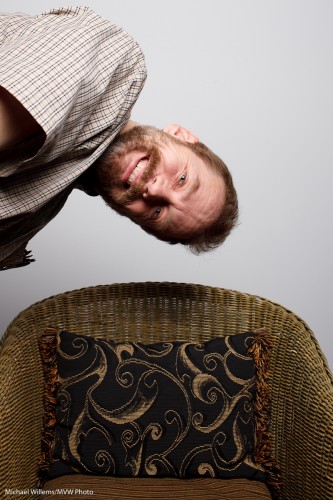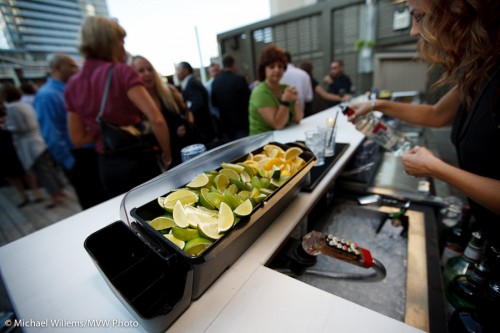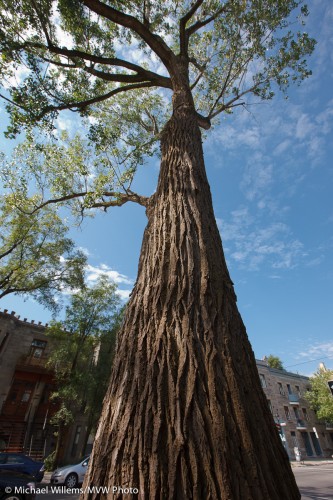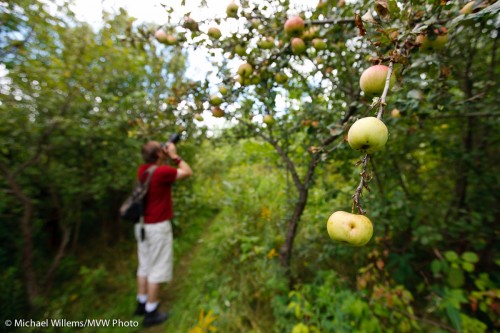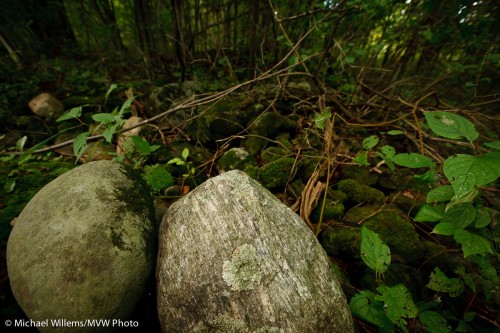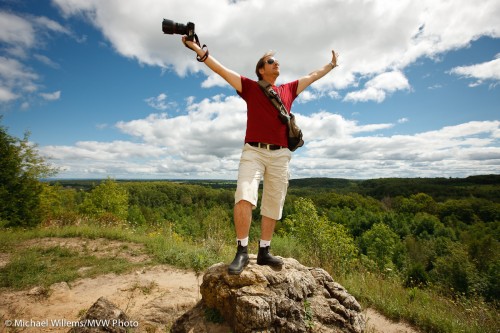The other day, before a course I taught, here’s a friend and student holding out his glass of Merlot – no, it was not a Merlot, it was an Italian red:
Isn’t that a nice shot?
So here are a few notes, numbered for your convenience, to help you take the same.
- As I point out time and time again, a shot that “makes the viewer put it together” is often great.
- A blurry person is often also appreciated by… the person, if they are shy. When people (ladies and teenagers, often!) say a panicked “no pictures”, try this.
- I used a 16-35 mm lens set to 30mm on a full frame camera, set to f/2.8. On a crop camera, you could use a 24mm prime lens, for example. On my 1Ds I could also have used the 35mm prime. This would have been my favourite lens for this shot.
- The wide angle gives you those wonderful converging lines.
- The wide open aperture of f/2.8 enabled me to shoot at 1/15th of a second using available light – at 3200 ISO.
- The blur also gives me a simple image with no distractions.
- It is very important that the lens is wide open. Look at the out-of-focus lights. They are circles. If the lens had been partly stopped down (to f/3.2, or f/4, say) you would have seen octagons or hexagons instead of circles.
- And yes, you can shoot at 3200 ISO with a good camera. Point-and-shoots will not do this, even with Lightroom noise reduction.
- That speed of 1/15th second is still a bit slow. You could easily get motion blur. So I took 3 or 4 pictures, of which this one was razor sharp.
- I focused carefully, using one focus point, on the glass.
- I had the subject move his glass forward, and I moved as close as the camera would let me focus. This makes the background go blurrier.
- Finally, I had to get the white balance right in post. This is very important with available light shots, which can otherwise take on an orange/yellow cast.
A little work – some thought goes into even a simple snap. But do it, think, and you get nice shots where you would not have expected them. And that is what sets you apart from Uncle Fred.







